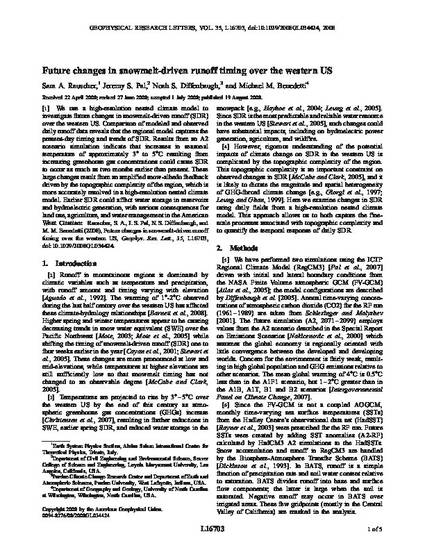
We use a high-resolution nested climate model to investigate future changes in snowmelt-driven runoff (SDR) over the western US. Comparison of modeled and observed daily runoff data reveals that the regional model captures the present-day timing and trends of SDR. Results from an A2 scenario simulation indicate that increases in seasonal temperature of approximately 3° to 5°C resulting from increasing greenhouse gas concentrations could cause SDR to occur as much as two months earlier than present. These large changes result from an amplified snow-albedo feedback driven by the topographic complexity of the region, which is more accurately resolved in a high-resolution nested climate model. Earlier SDR could affect water storage in reservoirs and hydroelectric generation, with serious consequences for land use, agriculture, and water management in the American West.
Copyright 2008 by the American Geophysical Union.
Available at: http://works.bepress.com/jeremy_pal/2/